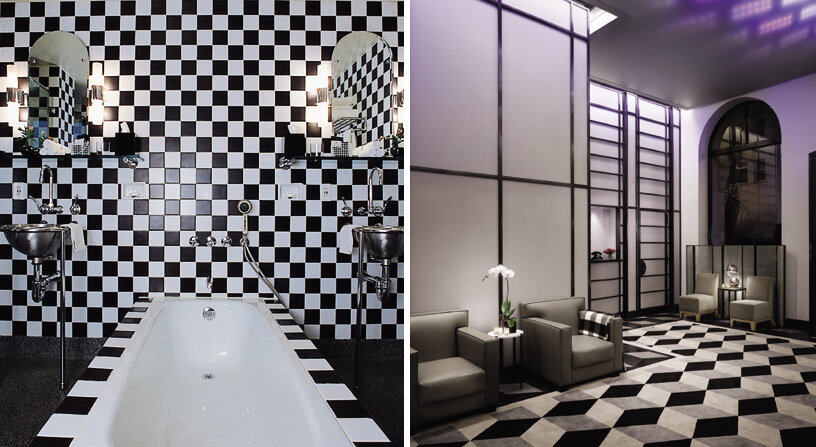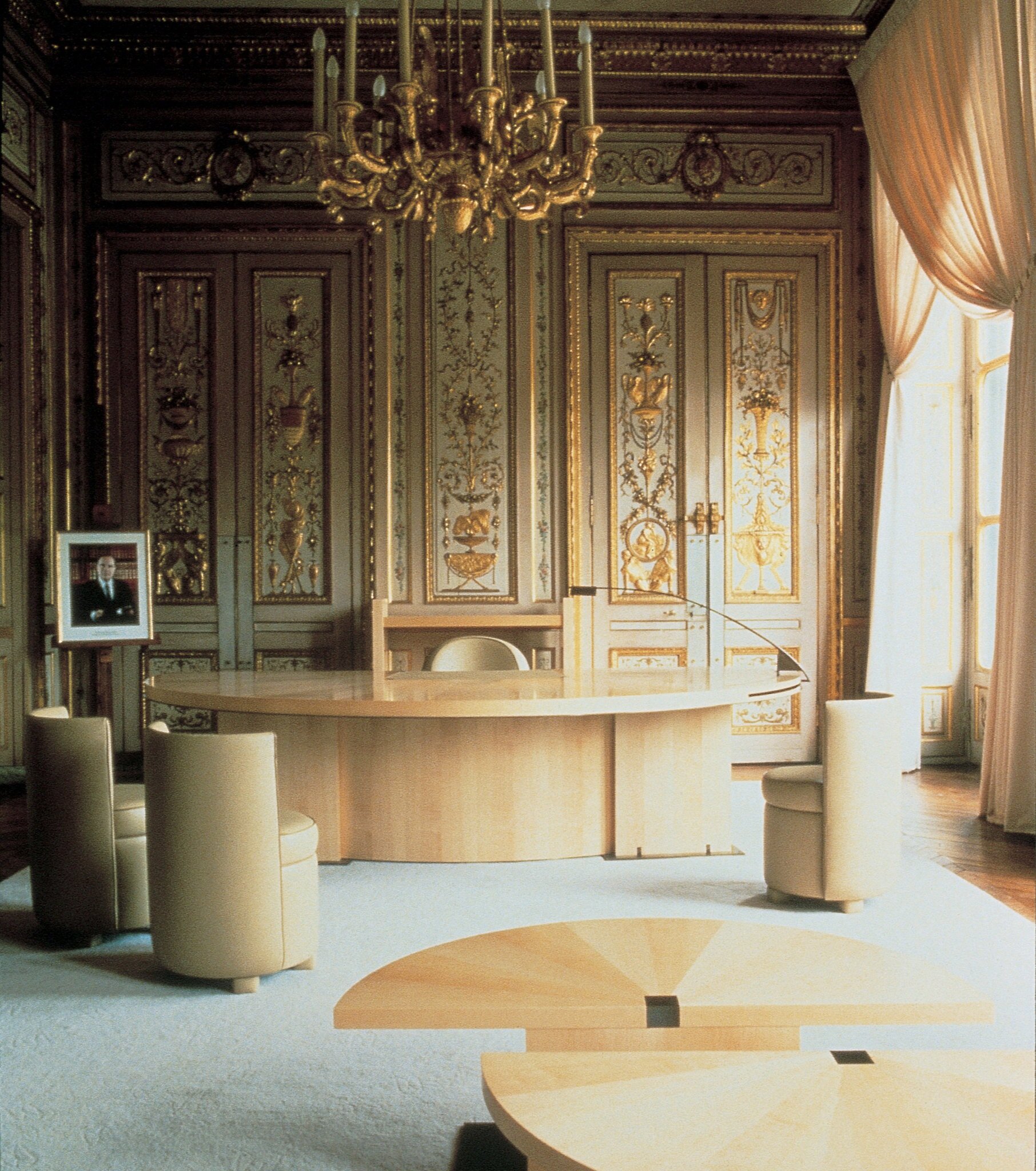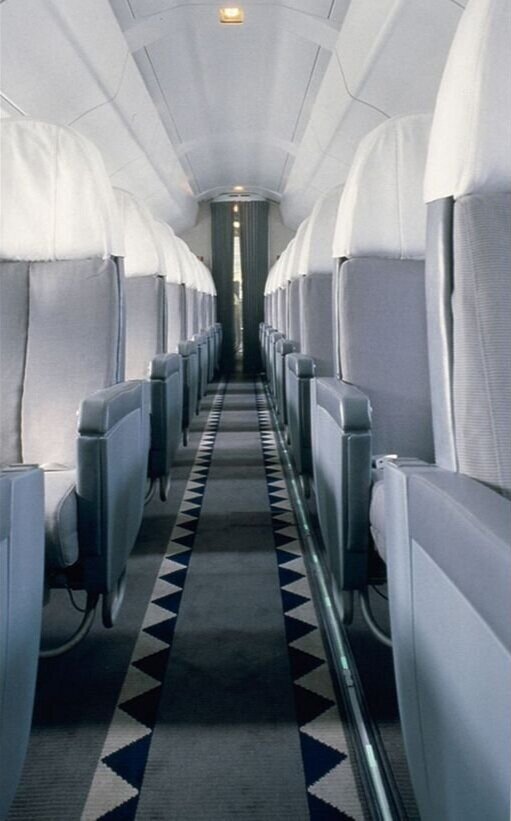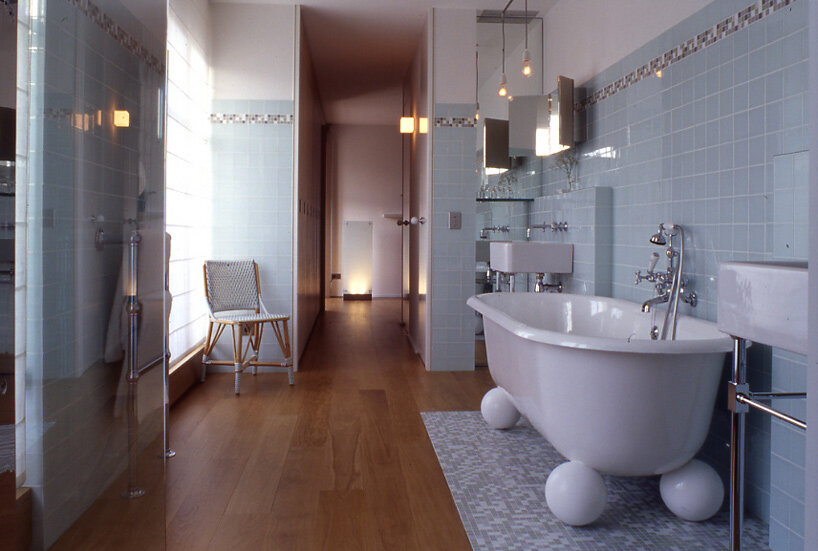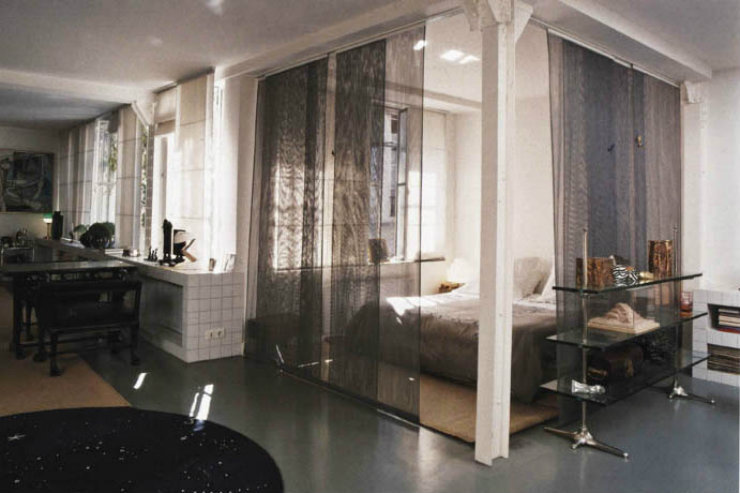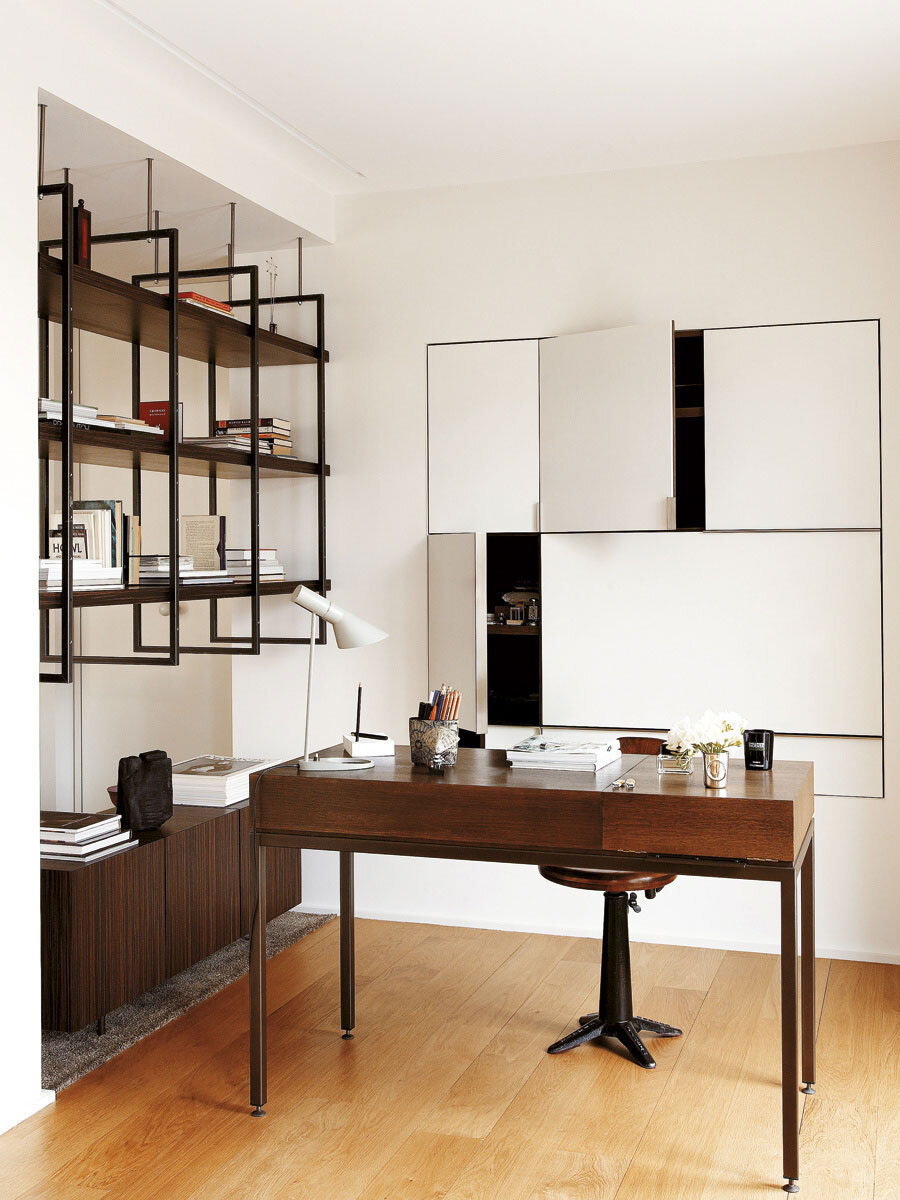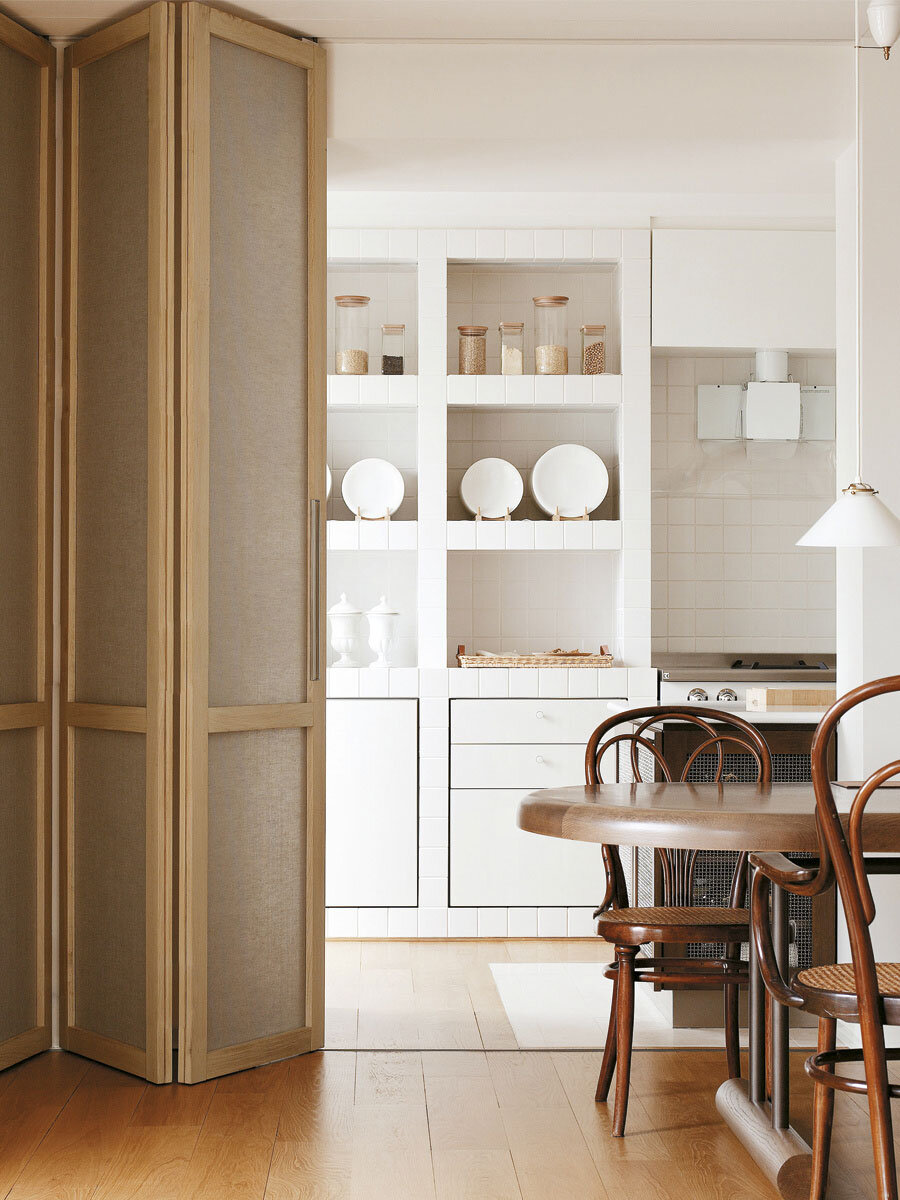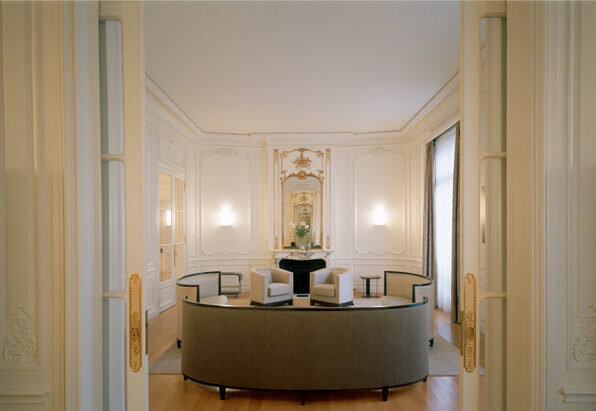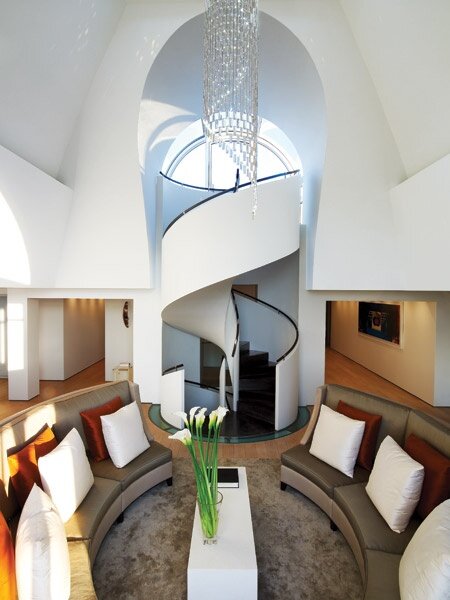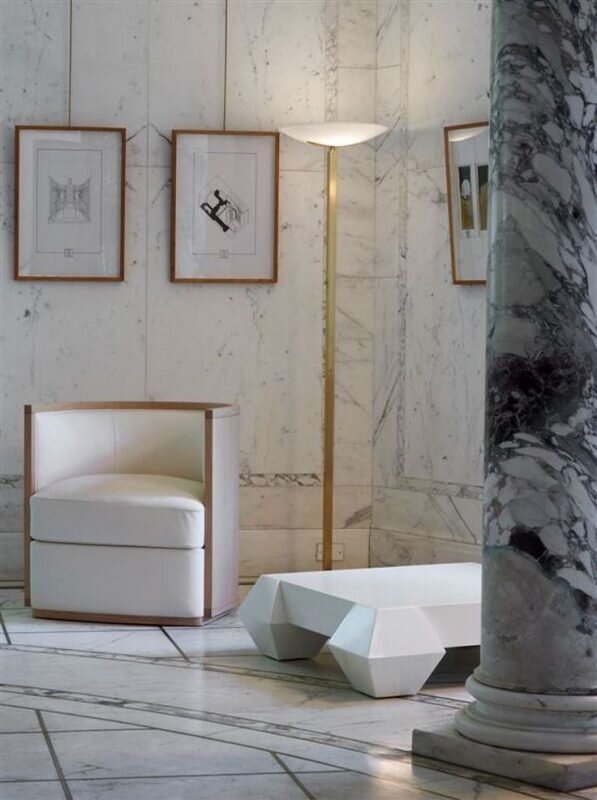ANDRÉE PUTMAN
1925 - 2013
“Unless you have a feeling for that secret knowledge that modest things can be more beautiful than anything expensive, you will never have style”
Influences: Early modernism, Eileen Gray, Pierre Chareau, Jean-Michel Frank
Notable clients: Karl Lagerfeld, Yves Saint Laurent, Ian Schrager and Steve Rubbell, Azzedine Alaïa, Air France
The queen of the checkerboard, self labeled '“archeologist of modernity” and the doyenne of Parisian design… Andrée Putman, the great French designer was born in Paris in 1925 to a wealthy, intellectual family. She began her artistic journey in music, studying piano after her mother’s encouragement, then moved on to composition after being told that she was not good enough to be a successful pianist. She was successfully studying composition at the Paris Conservatoire when she decided against a career in music at age 19.
Instead, she entered the world of design and fashion as a journalist, first working at Femina (1950), followed by Elle (1952) and then finally the famous art magazine L’Oeil as interiors editor. During that time, she met and married Jacques Putman who was an art critic, collector and publisher. Together they met and engaged with many artists and in 1958, she started to work for a retail chain Prisunic as their art director for the home department. Her job was to create well-designed, beautiful home products that were affordable by the general public. In 1971, she was spotted by Didier Grumbach to start a new textile company called Créateurs & Industriels. Her intuition and eye for good design was second to none and helped her to discover many talented designers such as Jean-Charles de Castelbajac, Issey Miyake and Thierry Mugler.
She went through a few difficult years after her divorce from Jacques Putman and bankruptcy of Créateurs & Industriels, where she tried to figure out her path and desire. Finally in 1978, she founded her first company Écart International selling furniture she found at flea markets. Through Écart she popularised forgotten French modernist furniture and designers including but not limited to Eileen Gray, Pierre Chareau, Rene Herbst and Jean-Michel Frank. She is still credited for the revival of early modernist designers and reproduction of their iconic designs.
She landed her most well-known interiors project at age 58 when hired by infamous duo Ian Schranger and Steve Rubbell (former owners of iconic Studio 54) to decorate the Morgans Hotel in Manhattan. Her budget was limited, which forced her to be creative and resourceful. She successfully employed the minimalist composition of black, white and grey throughout the hotel and proved to the world that high-quality design can be achieved with limited budget and affordable materials. According to Putman, “style and money have nothing to do with each other” and '“good design is pure and simple, and (she is) interested in that family of things that will never date”. When the hotel opened it’s doors after a year, it became sensational and revolutionised hotel design. The black and white checkered bathrooms, which I’m currently obsessed with, became iconic and prime example of “Le style Putman”. Morgans Hotel marks both the beginning of the boutique hotel era and the global fame of Putman.
Following the successful launch of Morgans Hotel, Putman was commissioned by many famous designers such as Azzedine Alaïa, Karl Lagerfeld and Balenciaga to design their showrooms. She was also commissioned by Air France to redo the interior of the Concorde and Jack Lang, French Minister of Culture of the time to decorate his office.
Her style was cutting-edge, refined and bold and would be best described as ‘restrained chic’ - always precise, disciplined and rigourous. She owns the minimalist look that is sophisticated, sleek and unique. Lagerfeld once described Putman’s style as “very French, impeccable, very clean”. She was the advocate of radical simplicity and strongly against patterned fabrics. In her own words “prints (were) an aggression you never asked for”. However, she was never afraid of mixing different styles and periods - modern materials and furnishings were often mixed with carefully selected classic elements in Putman’s interiors. She paved the way for other designers to use modern and minimalist furnitures in historic surroundings.
Whether it was the interiors of a boutique hotel, custom-made furniture or a product, her designs were always iconic and high-end. She carried the bold, monochromatic palette of white and black elegantly and matched her designs with her outfits.
She advocated a new way of living, where there were no walls and living spaces were not divided according to functionality. She lived in an open space loft in an old printing house during late 70s, when it was not a common thing to do.
In 1997 she launched Studio Putman, a design studio specialised in interior design, product design and scenography. Her daughter Olivia took over as an art director in 2007 and celebrated her mum’s successful career with an exhibition at the Hôtel de Ville, Paris in 2010, which was visited by 250,000 people.
Most of us are not brave enough to make simple changes or chase our dreams when we are still in our lates 20s/early 30s but Putman was brave enough to found a new company for the first time at age 53, after a failed marriage and a business partnership. She became the most famous female French designer in the world when she was 58, thanks to her determination and courage. “Sometimes, courage is needed to make a decision which could shock some, but which turns out to be the right one” - Andrée Putman.
Fun fact: The iconic black and white tiles of Morgans Hotel was actually the result of a limited budget. The only tile Putman liked and can afford was available in only pink, black and white so there goes the iconic bathrooms! I guess she was right when she said “''style has nothing to do with money. In fact, an excess of money can handicap style. It doesn't help to have so much choice.”
References:
Inspired Design by Jennifer Boles
Pictures:
1 - Photo by Ivan Terestchenko
2 - Photos by Deidi von Schaewen
3 - Photos by Deidi von Schaewen
4 - Photo by Deidi von Schaewen
5 - Photo via Design Contract
6 - Photos by Antonio Terron for AD Spain
7 - Photo via Sanayi 313
8 -Left image by Eric Laignel, right image via Boca do Lobo
9 - Photo by Eric Laignel

